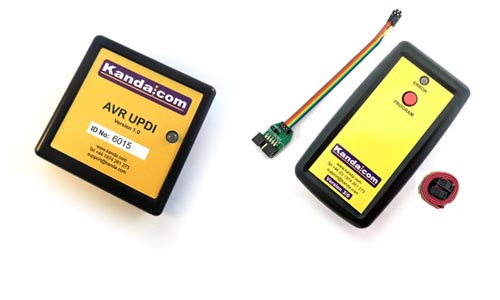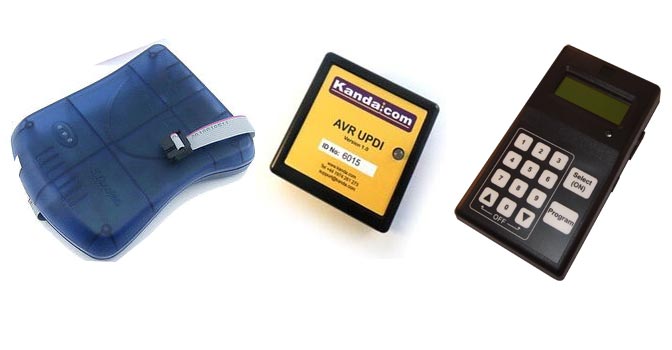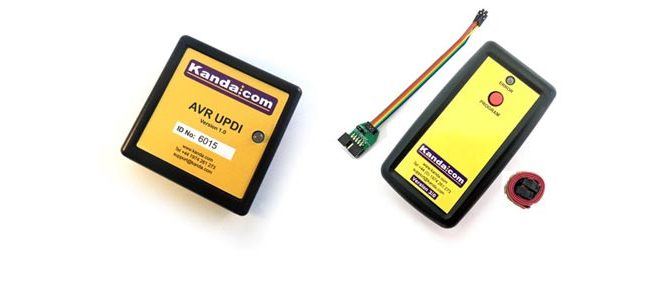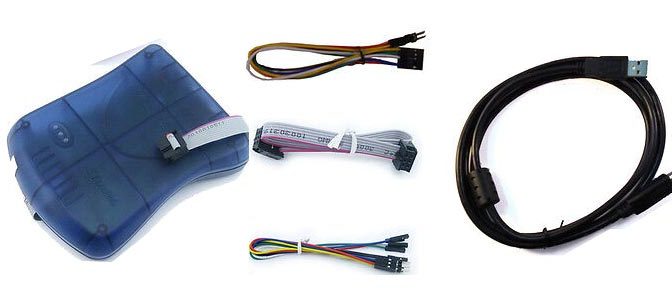Choosing thecorrect AVR programmer depends on the requirements of your project, budget and your experience level. There are a number of factors to consider when making your decision.
Continue reading “How to Choose an AVR Programmer” »Category Archives: AVR Microcontrollers
Atmel AVR TPI Programmer Selection
Atmel, now Microchip, have been moving away from AVR ISP programming method for some time. All the latest AVR microcontrollers now use UPDI programming interface but some ATtiny chips used TPI interface, which is discussed here.
Continue reading “Atmel AVR TPI Programmer Selection” »AVR UPDI Programmer
Microchip, who took over Atmel, have pushed UPDI as the preferred programming method for AVR microcontrollers. All the latest devices use this interface for both debugging and programming – UPDI means Unified Programming and Debug Interface.
Continue reading “AVR UPDI Programmer” »AVR High Voltage Programmer
The only way to re-enable Reset or SPIEN fuses on some older AVR chips like ATtiny13A, to allow them to be reprogrammed, is to use High Voltage programming (HVP) method. This was available on AVR Dragon, STK500 and STK600 but since these have been discontinued, there is a lack of suitable programmers.
So, what is now the best solution for AVR High Voltage Programming?
Continue reading “AVR High Voltage Programmer” »Move from Atmel Studio to MPLAB X IDE
Microchip took over Atmel some years ago and are slowly eliminating the Atmel brand. One of the major legacies from Atmel is their Atmel Studio development environment but its days may be numbered.
Continue reading “Move from Atmel Studio to MPLAB X IDE” »Atmel Studio now Microchip Studio
Microchip took over Atmel (who made the AVR microcontroller) a few years ago and have been slowly erasing the Atmel brand. Their latest move is to rename Atmel Studio as Microchip Studio.
Continue reading “Atmel Studio now Microchip Studio” »How to use AVRISP-MKII with AVRDUDE and Great cow basic
Atmel have stopped making AVRISP-MKII but Kanda sell a Waveshare version that is identical to the original. Atmel Studio fully supports AVRISP-MKII and it is simple to install and use with Studio but it can also be used with AVRDude and Great Cow Basic compiler.
Continue reading “How to use AVRISP-MKII with AVRDUDE and Great cow basic” »AVR Programming – ISP, JTAG, TPI, PDI and UPDI
When AVR microcontrollers were first introduced in 1995, In System Programming was simple, with one programming method (Serial Programming Interface or SPI) and a recommended 5 x 2 10-pin target interface. For 10-15 years, this stayed the same except for the addition of JTAG programming on some devices and a move towards a 3 x 2 6-pin target header. In the last few years, new interfaces have sprouted like weeds, including TPI, PDI and UPDI. What do this all mean and how does it affect you?
Continue reading “AVR Programming – ISP, JTAG, TPI, PDI and UPDI” »
Atmel Studio Missing External Tools Menu
The latest versions of Atmel Studio 7 seem to omit External Tools… from the Tools menu. This command is necessary to add your own programmer so it can be launched from Studio. If it is missing, how is it added?
Continue reading “Atmel Studio Missing External Tools Menu” »
Atmel Studio ELF production Files for AVR
Atmel have added a new feature to Atmel Studio from 6.2 on-wards including 7. You can now create a single file that contains all the data needed to program an AVR or ATxmega microcontroller. This includes flash, EEPROM, fuses, lock bits and ATxmega User Row. This is called an ELF production file and Kanda AVR Handheld Programmers now support this format.
Continue reading “Atmel Studio ELF production Files for AVR” »




